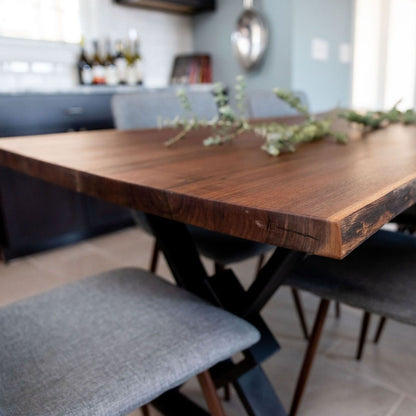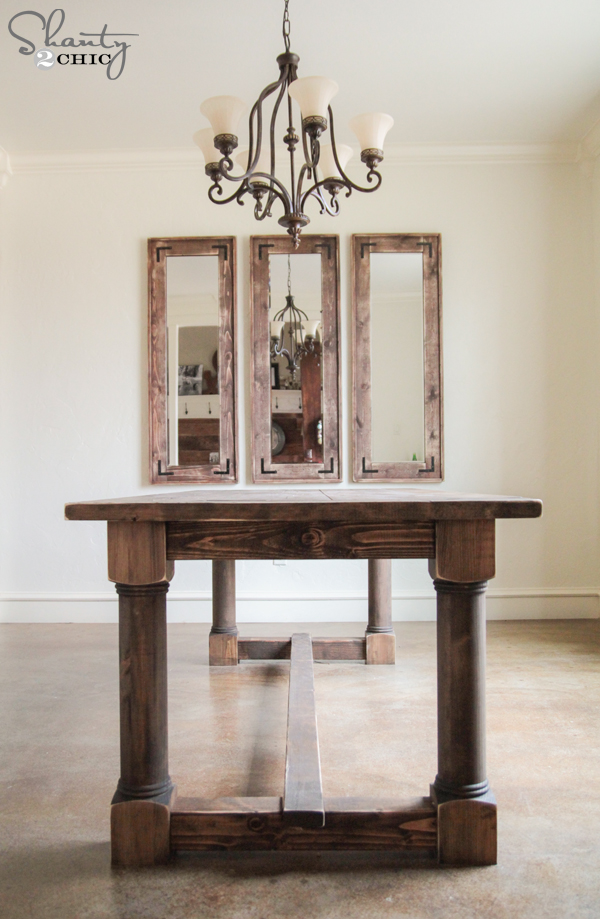Dining Room Table Legs: A Guide to Selecting the Right Style for Your Home
Dining Room Table Legs: A Guide to Selecting the Right Style for Your Home
Blog Article
From Standard to Modern: Locate the Ideal Eating Area Table Legs for Your Style
While traditional layouts such as cabriole and turned legs stimulate a sense of timeless sophistication, contemporary styles like hairpin and geometric choices provide an opportunity for striking visual interest. As you consider these elements, the question remains: just how can you perfectly incorporate these varied leg styles to produce a harmonious eating experience?
Comprehending Table Leg Styles
The range of dining-room table leg styles can dramatically affect both the aesthetics and performance of the room. Each leg design contributes one-of-a-kind useful features and visual elements, dealing with varied style choices and use demands. Comprehending these styles is important for picking the best eating table that lines up with your general interior style vision.
For instance, conical legs use a clean, timeless appearance that can enhance an area's style, while pedestal bases give stability and maximize legroom, making them ideal for smaller sized spaces. Barrette legs, a trademark of mid-century modern-day layout, introduce a commercial flair, permitting an airy, open feel. Trestle legs stimulate rustic charm, offering durable assistance and a feeling of timelessness.
Furthermore, the option of materials plays a considerable role. Wooden legs can bring heat and appearance, whereas steel alternatives often communicate a smooth, contemporary ambiance. Eventually, understanding table leg designs is necessary for producing a cohesive dining area that reflects personal style while ensuring practicality and convenience. By attentively thinking about these aspects, you can boost both the functional and aesthetic allure of your dining room.
Typical Table Leg Options
When picking eating room table legs, typical alternatives often embody timeless beauty and workmanship. These styles mirror a rich heritage and a dedication to high quality, making them optimal for those who appreciate traditional looks.
One of the most renowned conventional leg styles is the cabriole leg, characterized by its stylish rounded form. This layout commonly includes decorative carvings and is most generally found in Queen Anne and Chippendale furnishings. An additional popular option is the turned leg, which boasts a collection of smooth, rounded forms that give a traditional appearance while maintaining security.
Additionally, the straight leg, while easy, provides a basic and durable framework that can blend perfectly with a selection of tabletop designs. For those attracted to ornate detailing, claw-and-ball feet legs evoke a feeling of majesty and can work as a spectacular focal point in any kind of dining space.
Finally, pedestal bases, although not purely legs, give a different traditional choice that permits ample legroom and can be beautifully sculpted. Each of these standard leg designs adds to the general atmosphere of a dining-room, marrying feature with aesthetic appeal.

Modern Table Leg Designs
Modern table leg styles provide a varied variety of styles that highlight clean lines and innovative products. These styles commonly focus on performance while serving as striking focal points within a dining room. Minimalist looks prevail, with legs crafted from materials such as steel, glass, and crafted wood, which Click Here contribute to a modern and ventilated feeling.
One popular style is the hairpin leg, identified by its slender, tapered framework that supplies security without overwhelming the tabletop (dining room table legs). This style is frequently discovered in mid-century modern-day furnishings and can effortlessly complement various eating table forms. Another trend is making use of geometric shapes, where legs might tackle asymmetrical or angular kinds, including visual interest and a touch of artistry

Mixing Designs for Distinct Spaces
Usually, home owners seek to produce distinct dining rooms that show their individual style by mixing different style components. This method allows for the incorporation of varied aesthetic appeals, causing a harmonious yet distinctive atmosphere. Combining a rustic wooden table with streamlined, contemporary metal legs can create an eye-catching contrast that boosts the space's overall charm.
Additionally, integrating vintage table legs with modern tabletops can stimulate a feeling of background while keeping a modern perceptiveness. Such mixes not only showcase individual preference yet also encourage creative thinking, enabling homeowners to curate a room that feels both individual and inviting.
Shade plays a vital duty in this blending process; choosing table legs that enhance or comparison with the existing color pattern can improve visual interest. For example, whitewashed legs can soften the daring of a dark table surface, developing a balanced aesthetic.
Tips for Choosing the Right Legs
Choosing the right table legs is important for accomplishing both performance and aesthetic allure in your eating area. Begin by considering the overall design of your space. Conventional setups gain from legs that include complex makings or turned designs, while contemporary spaces may ask for sleek, minimal designs.
Next, examine the height and stability of the legs. dining room table legs. Typical table see post vary in between 28 to 30 inches in elevation, so guarantee the legs complement this measurement for convenience. Additionally, durable products, such as wood or steel, can improve security and long life
Examine the leg shape as well-- options include straight, tapered, or stand designs. Straight legs use a traditional look, while tapered legs can include a touch of sophistication. Pedestal bases supply adequate legroom and are suitable for smaller sized spaces.
Final Thought
In summary, selecting the optimal dining room table legs requires careful factor to consider of both contemporary and standard styles. Traditional options such as cabriole and transformed see post legs use ageless beauty, while contemporary designs like barrette and geometric forms offer a contemporary touch. By harmonizing leg style, elevation, and material with the overall décor, a cohesive and welcoming environment can be achieved. Inevitably, the picked table legs ought to reflect the wanted visual, enhancing the eating experience within the room.
The range of eating space table leg styles can dramatically influence both the aesthetics and capability of the area. Eventually, recognizing table leg styles is essential for developing a cohesive eating area that mirrors individual style while making sure functionality and comfort.One of the most famous conventional leg designs is the cabriole leg, characterized by its elegant rounded shape. Straight legs provide a timeless look, while tapered legs can add a touch of beauty.In recap, choosing the optimal eating space table legs calls for mindful consideration of both traditional and modern designs.
Report this page